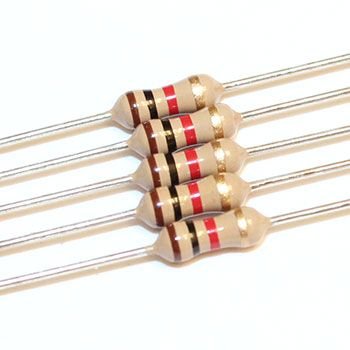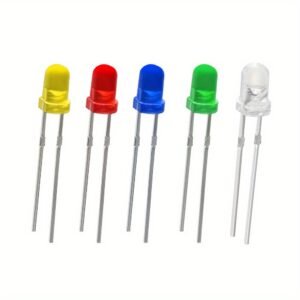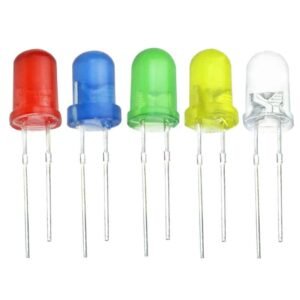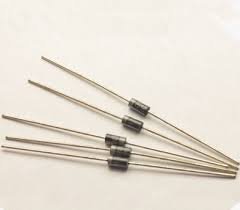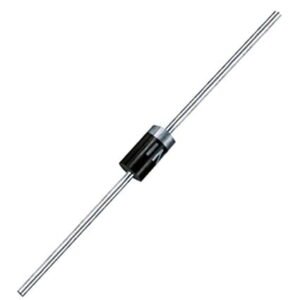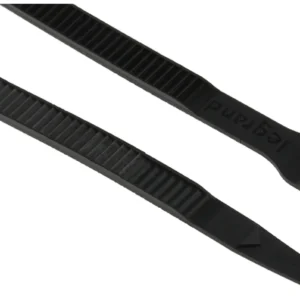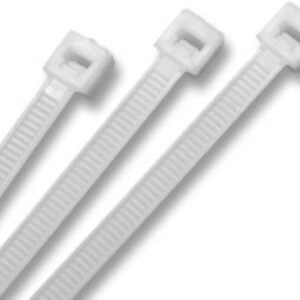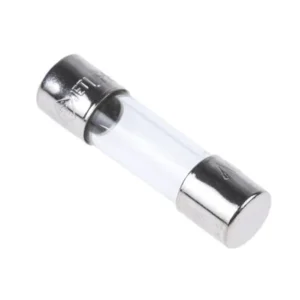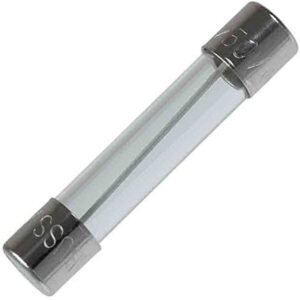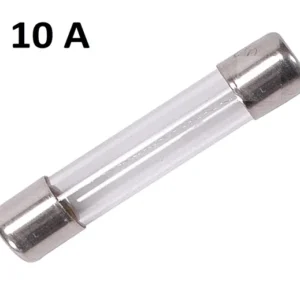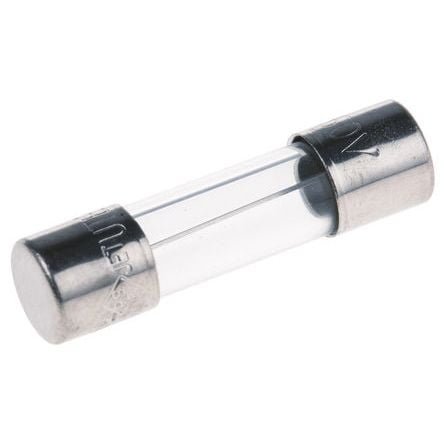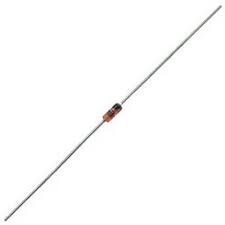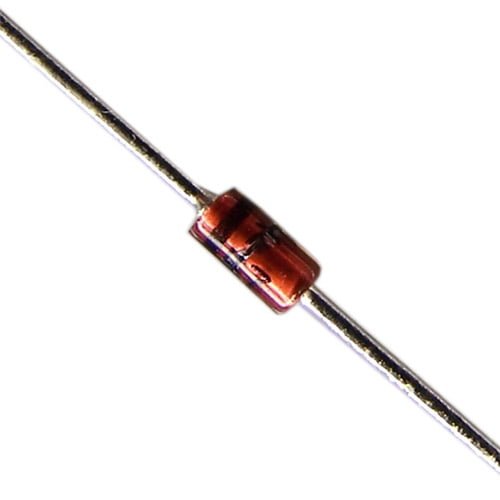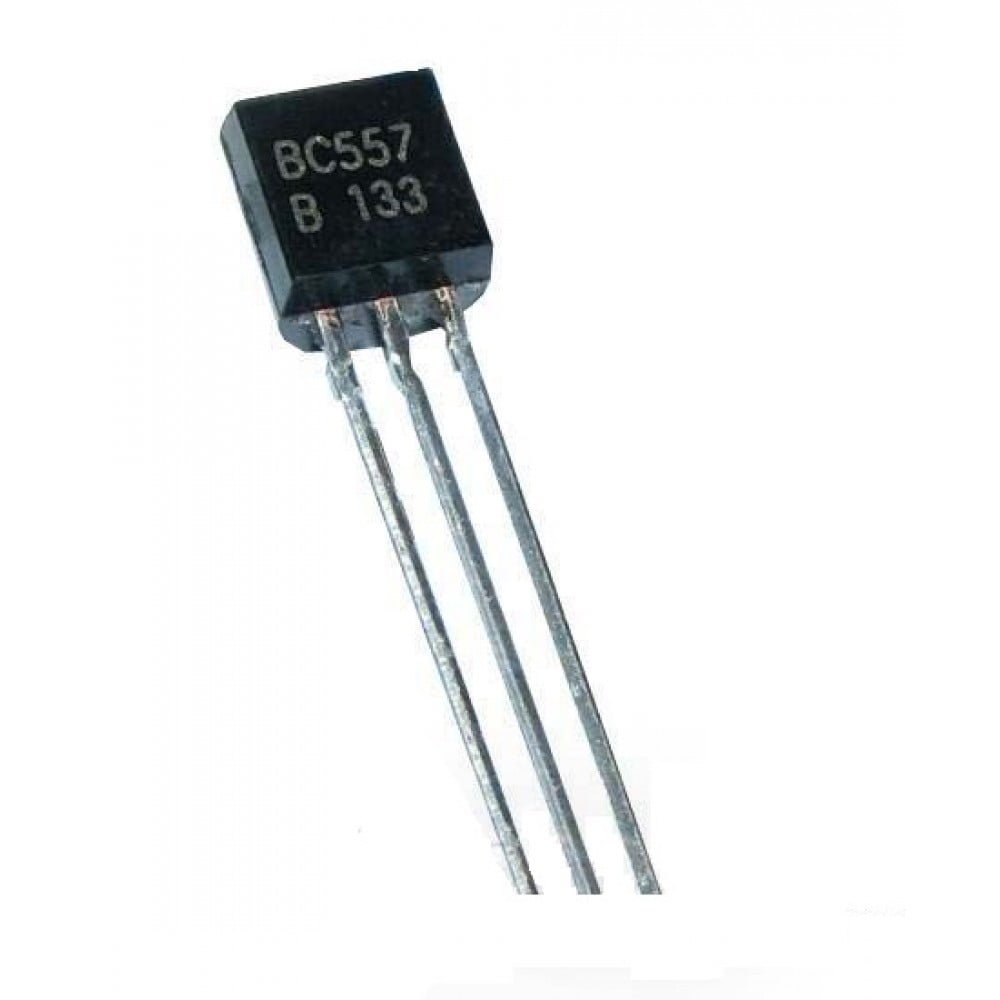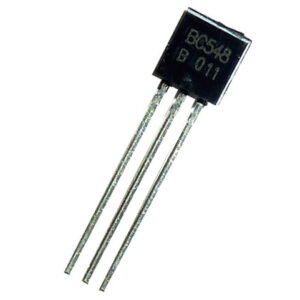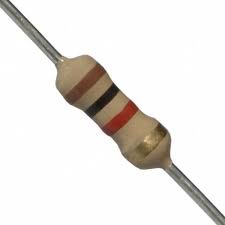-
Resistors are electronic components which have a specific, never-changing electrical resistance. The resistors resistance limits the flow of electrons through a circuit. They are passive components, meaning they only consume power (and cant generate it). Resistors are usually added to circuits where they complement active components like op-amps, microcontrollers, and other integrated circuits. Commonly resistors are used to limit current, divide voltages, and pull-up I/O lines.
-
Resistors are electronic components which have a specific, never-changing electrical resistance. The resistors resistance limits the flow of electrons through a circuit. They are passive components, meaning they only consume power (and cant generate it). Resistors are usually added to circuits where they complement active components like op-amps, microcontrollers, and other integrated circuits. Commonly resistors are used to limit current, divide voltages, and pull-up I/O lines.
-
Resistors are electronic components which have a specific, never-changing electrical resistance. The resistor’s resistance limits the flow of electrons through a circuit. They are passive components, meaning they only consume power (and can’t generate it). Resistors are usually added to circuits where they complement active components like op-amps, microcontrollers, and other integrated circuits. Commonly resistors are used to limit current, divide voltages, and pull-up I/O lines.
-
Resistors are electronic components which have a specific, never-changing electrical resistance. The resistor’s resistance limits the flow of electrons through a circuit. They are passive components, meaning they only consume power (and can’t generate it). Resistors are usually added to circuits where they complement active components like op-amps, microcontrollers, and other integrated circuits. Commonly resistors are used to limit current, divide voltages, and pull-up I/O lines.
-
Resistors are electronic components which have a specific, never-changing electrical resistance. The resistors resistance limits the flow of electrons through a circuit. They are passive components, meaning they only consume power (and cant generate it). Resistors are usually added to circuits where they complement active components like op-amps, microcontrollers, and other integrated circuits. Commonly resistors are used to limit current, divide voltages, and pull-up I/O lines.
-
Resistors are electronic components which have a specific, never-changing electrical resistance. The resistors resistance limits the flow of electrons through a circuit. They are passive components, meaning they only consume power (and cant generate it). Resistors are usually added to circuits where they complement active components like op-amps, microcontrollers, and other integrated circuits. Commonly resistors are used to limit current, divide voltages, and pull-up I/O lines.
-
Resistors are electronic components which have a specific, never-changing electrical resistance. The resistors resistance limits the flow of electrons through a circuit. They are passive components, meaning they only consume power (and cant generate it). Resistors are usually added to circuits where they complement active components like op-amps, microcontrollers, and other integrated circuits. Commonly resistors are used to limit current, divide voltages, and pull-up I/O lines.
-
Resistors are electronic components which have a specific, never-changing electrical resistance. The resistors resistance limits the flow of electrons through a circuit. They are passive components, meaning they only consume power (and cant generate it). Resistors are usually added to circuits where they complement active components like op-amps, microcontrollers, and other integrated circuits. Commonly resistors are used to limit current, divide voltages, and pull-up I/O lines.
-
Resistors are electronic components which have a specific, never-changing electrical resistance. The resistors resistance limits the flow of electrons through a circuit. They are passive components, meaning they only consume power (and cant generate it). Resistors are usually added to circuits where they complement active components like op-amps, microcontrollers, and other integrated circuits. Commonly resistors are used to limit current, divide voltages, and pull-up I/O lines.
-
Resistors are electronic components which have a specific, never-changing electrical resistance. The resistors resistance limits the flow of electrons through a circuit. They are passive components, meaning they only consume power (and cant generate it). Resistors are usually added to circuits where they complement active components like op-amps, microcontrollers, and other integrated circuits. Commonly resistors are used to limit current, divide voltages, and pull-up I/O lines.
-
Resistors are electronic components which have a specific, never-changing electrical resistance. The resistors resistance limits the flow of electrons through a circuit. They are passive components, meaning they only consume power (and cant generate it). Resistors are usually added to circuits where they complement active components like op-amps, microcontrollers, and other integrated circuits. Commonly resistors are used to limit current, divide voltages, and pull-up I/O lines.
-
Resistors are electronic components which have a specific, never-changing electrical resistance. The resistors resistance limits the flow of electrons through a circuit. They are passive components, meaning they only consume power (and cant generate it). Resistors are usually added to circuits where they complement active components like op-amps, microcontrollers, and other integrated circuits. Commonly resistors are used to limit current, divide voltages, and pull-up I/O lines.
-
Resistors are electronic components which have a specific, never-changing electrical resistance. The resistors resistance limits the flow of electrons through a circuit. They are passive components, meaning they only consume power (and cant generate it). Resistors are usually added to circuits where they complement active components like op-amps, microcontrollers, and other integrated circuits. Commonly resistors are used to limit current, divide voltages, and pull-up I/O lines.
-
Resistors are electronic components which have a specific, never-changing electrical resistance. The resistors resistance limits the flow of electrons through a circuit. They are passive components, meaning they only consume power (and cant generate it). Resistors are usually added to circuits where they complement active components like op-amps, microcontrollers, and other integrated circuits. Commonly resistors are used to limit current, divide voltages, and pull-up I/O lines.
-
Resistors are electronic components which have a specific, never-changing electrical resistance. The resistors resistance limits the flow of electrons through a circuit. They are passive components, meaning they only consume power (and cant generate it). Resistors are usually added to circuits where they complement active components like op-amps, microcontrollers, and other integrated circuits. Commonly resistors are used to limit current, divide voltages, and pull-up I/O lines.
-
Resistors are electronic components which have a specific, never-changing electrical resistance. The resistors resistance limits the flow of electrons through a circuit. They are passive components, meaning they only consume power (and cant generate it). Resistors are usually added to circuits where they complement active components like op-amps, microcontrollers, and other integrated circuits. Commonly resistors are used to limit current, divide voltages, and pull-up I/O lines.
-
Resistors are electronic components that have a specific, never-changing electrical resistance. The resistor’s resistance limits the flow of electrons through a circuit. They are passive components, meaning they only consume power (and can’t generate it). Resistors are usually added to circuits where they complement active components like op-amps, microcontrollers, and other integrated circuits. Common resistors are used to limit current, divide voltages, and pull up I/O lines.
-
Resistors are electronic components which have a specific, never-changing electrical resistance. The resistors resistance limits the flow of electrons through a circuit. They are passive components, meaning they only consume power (and cant generate it). Resistors are usually added to circuits where they complement active components like op-amps, microcontrollers, and other integrated circuits. Commonly resistors are used to limit current, divide voltages, and pull-up I/O lines.
-
Resistors are electronic components which have a specific, never-changing electrical resistance. The resistor’s resistance limits the flow of electrons through a circuit. They are passive components, meaning they only consume power (and cant generate it). Resistors are usually added to circuits where they complement active components like op-amps, microcontrollers, and other integrated circuits. Commonly resistors are used to limit current, divide voltages, and pull-up I/O lines.
-
Resistors are electronic components which have a specific, never-changing electrical resistance. The resistors resistance limits the flow of electrons through a circuit. They are passive components, meaning they only consume power (and can’t generate it). Resistors are usually added to circuits where they complement active components like op-amps, microcontrollers, and other integrated circuits. Commonly resistors are used to limit current, divide voltages, and pull-up I/O lines.
-
Resistors are electronic components which have a specific, never-changing electrical resistance. The resistors resistance limits the flow of electrons through a circuit. They are passive components, meaning they only consume power (and cant generate it). Resistors are usually added to circuits where they complement active components like op-amps, microcontrollers, and other integrated circuits. Commonly resistors are used to limit current, divide voltages, and pull-up I/O lines.
-
Resistors are electronic components which have a specific, never-changing electrical resistance. The resistors resistance limits the flow of electrons through a circuit. They are passive components, meaning they only consume power (and cant generate it). Resistors are usually added to circuits where they complement active components like op-amps, microcontrollers, and other integrated circuits. Commonly resistors are used to limit current, divide voltages, and pull-up I/O lines.
-
Resistors are electronic components which have a specific, never-changing electrical resistance. The resistors resistance limits the flow of electrons through a circuit. They are passive components, meaning they only consume power (and cant generate it). Resistors are usually added to circuits where they complement active components like op-amps, microcontrollers, and other integrated circuits. Commonly resistors are used to limit current, divide voltages, and pull-up I/O lines.
-
Resistors are electronic components which have a specific, never-changing electrical resistance. The resistors resistance limits the flow of electrons through a circuit. They are passive components, meaning they only consume power (and cant generate it). Resistors are usually added to circuits where they complement active components like op-amps, microcontrollers, and other integrated circuits. Commonly resistors are used to limit current, divide voltages, and pull-up I/O lines.
-
Resistors are electronic components that have a specific, never-changing electrical resistance. The resistor’s resistance limits the flow of electrons through a circuit. They are passive components, meaning they only consume power (and can’t generate it). Resistors are usually added to circuits where they complement active components like op-amps, microcontrollers, and other integrated circuits. Common resistors are used to limit current, divide voltages, and pull up I/O lines.
-
Resistors are electronic components which have a specific, never-changing electrical resistance. The resistor’s resistance limits the flow of electrons through a circuit. They are passive components, meaning they only consume power (and can’t generate it). Resistors are usually added to circuits where they complement active components like op-amps, microcontrollers, and other integrated circuits. Commonly resistors are used to limit current, divide voltages, and pull-up I/O lines.
-
- 5% through hole Resistor
- 1/4 Watt
- 0.25 Watt
-
- Type: 5mm Diffuse Led
- Colors: Red, Green, Yellow, Blue and Ultra-bright White
- Pot diameter: 5mm
- Shell Material: Epoxy
- Typical working voltage: 1.9 to 2 volts
- Typical current: 20mA
- Wavelength: 620 to 625nm
- Luminous intensity: 600 to 800mcd
- The angle of view: 45
- Number of pins: 2
-
3mm Frosted LEDs bright 3mm LEDs are incredibly bright with a wide beam angle. They’re suitable for use in your projects, illuminations, car lighting, models or anywhere where you need low power, high-intensity reliable lighting or indication. They fit easily into a breadboard and will add that extra zing to your project.
The lens has a frosted effect, which distributes the light evenly. Excellent for use in all types of indicators where an unfocused light is desirable. They work well mounted in our 3mm LED Holders and the light produced from the Red, Green, Blue, Yellow, or White LED appears very crisp and clean.
-
A ceramic capacitor is a fixed-value capacitor where the ceramic material acts as the dielectric. The value of 224 ceramic capacitor is 220nF.
-
- Ceramic Type Capacitor
- 470pf (471)
- Volt; 50V
- Capacitor Tolerance: 10%.
- Color: As pictures
- Structure: Fixed capacitors
-
Arduino jumper wire, male to male connector.
-
Arduino jumper wire, male to male connector.
-
1N4007 1000V 1A General Purpose Rectifier Diode 4007
Original price was: ₨8.00.₨5.00Current price is: ₨5.00. Quick View- Maximum Recurrent Peak Reverse Voltage 1000V
- Maximum Average Forward Output Current 1A
- Maximum Forward Voltage Drop per element at 1.0A DC 1.1V
- Typical Junction Capacitance 15pF
- Package DO-41
- Weight 0.33grams
- Operating and Storage Temperature Range (65 to +175C)
-
- Average forward current is 1A
- Non-repetitive Peak current is 30A
- Reverse current is 5uA.
- RMS reverse voltage is 70V
- Peak repetitive Reverse voltage is 100V
- Available in DO-41 Package
-
IN4001 Diode 4001 Rectifier Diode
Original price was: ₨8.00.₨5.00Current price is: ₨5.00. Quick View- Package Type: Available in DO-41 & SMD Packages
- Diode Type: Silicon Rectifier General Usage Diode
- Max Repetitive Reverse Voltage is: 50 Volts
- Average Fwd Current: 1000mA
- Non-repetitive Max Fwd Current: 30A
- Max Power Dissipation is: 3W
- Max Storage & Operating temperature Should Be: -55 to +175 Centigrade
-
- Size 4Inch
- Type: self-locking nylon cable tie
- Material: Nylon66 Cable Tie
- Feature: Heat resistant, erosion control, insulate well.
- Operation Temperature: -40c to 85c
- Colour: Natural (white or standard color), UV black.
- Package: Polybag + Label
- To keep all wires in place this product is what u are waiting for.
-
- Cable Zip Ties Contains: Tie wraps 3 INCH
- Pure new PA66 nylon material, the cable tie is made of approved UL66 nylon new High tensile strength and A high degree of flexibility that does not break easily, is safe and is environmentally friendly.
- length: 6Inch, Max tensile strength: 40 LBS tensile strength is determined by width and thickness. Our ties are widest, compared to most ties on the market Durable Nylon Ties and heat resistance of the heavy-duty cable tie tape package, which can ensure that they are exposed to high temperatures for a long time, suitable for indoor and outdoor use, safe self-locking buckle can be easily locked in place, cable tie tape conforms to RoHS standard/UL certification UL 94 V2. Same size, but suitable
- In daily life, multi-purpose cable zip ties are so powerful that you can tie them together to wrap materials, repair plant branches, and repair garden fences. In offices and studios, they can be used to organize wires and hang LED lights and banners. You can even do some DIY ideas: make butterflies or fish for children; Show off your stylish tie wrap design.
-
- Made of a glass tube with nickel-plated-brass end caps.
- Fast Acting
- Size – 5mm x 20mm
- Voltage – 250V
- Current – 1A
-
- Made of a glass tube with nickel-plated-brass end caps.
- Fast Acting
- Size – 5mm x 20mm
- Voltage – 250V
- Current – 2A
-
- Made of a glass tube with nickel-plated-brass end caps.
- Fast Acting
- Size – 5mm x 20mm
- Voltage – 250V
- Current – 10A
-
- Made of a glass tube with nickel-plated-brass end caps.
- Fast Acting
- Size – 5mm x 20mm
- Voltage – 250V
- Current – 5A
-
3.3 Volt Zener Diode, 500mW, 5% tolerance. Low noise high stability, suitable for voltage regulation or voltage dropping in low current circuitry.
DO-35 package, For more information please see BZX55 Data Sheet
-
0.5W ZENER DIODE 18V 1/2W ZENER DIODE 18V
Original price was: ₨12.00.₨8.00Current price is: ₨8.00. Quick View- Diode type: Zener Diode
- Voltage rating: 18V
- Power: 500mW
- Material type: Semiconductor
-
- Package Type: TO-92
- Transistor Type: PNP
- Max Collector Current(IC): -100mA
- Max Collector-Emitter Voltage (VCE): -45V
- Max Collector-Base Voltage (VCB): -50V
- Max Emitter-Base Voltage (VBE): -5V
- Max Collector Dissipation (Pc): 500 Milliwatt
- Max Transition Frequency (fT): 100 MHz
- Minimum & Maximum DC Current Gain (hFE): 125 to 800
- Max Storage & Operating temperature Should be: -65 to +150Centigrade
-
- Bi-Polar NPN Transistor
- DC Current Gain (hFE) is 800 maximum
- Continuous Collector current (IC) is 500mA
- Emitter Base Voltage (VBE) is 5V
- Base Current(IB) is 5mA maximum
- Available in To-92 Package
-
IC sockets are generally for preventing damage to IC’s from soldering and while testing multiple circuits. These are made from Black Thermoplastic and tin-plated alloy contacts. One end is notched to aid in identification. They can be mounted end to end to suit longer IC’s.
-
Specifications:
- Power (Watts) 1W
- Resistant 1K OHMS
- Tolerance +- 5%
- Resistor Type Carbon Film
- Lead Free

